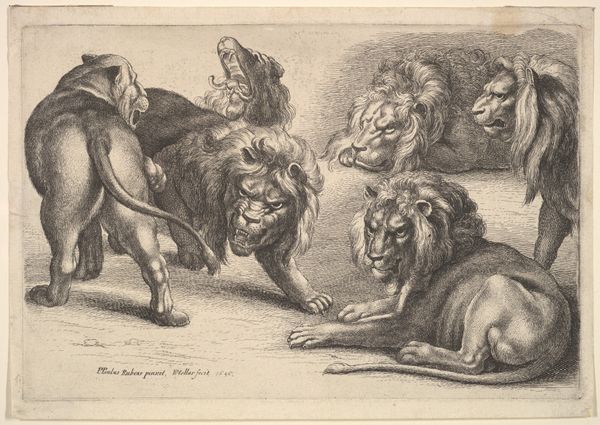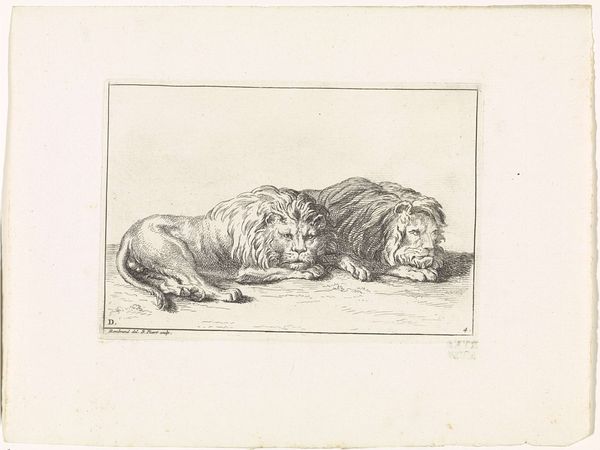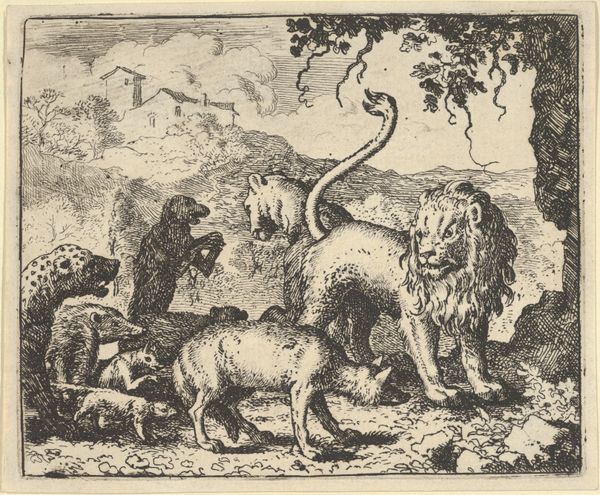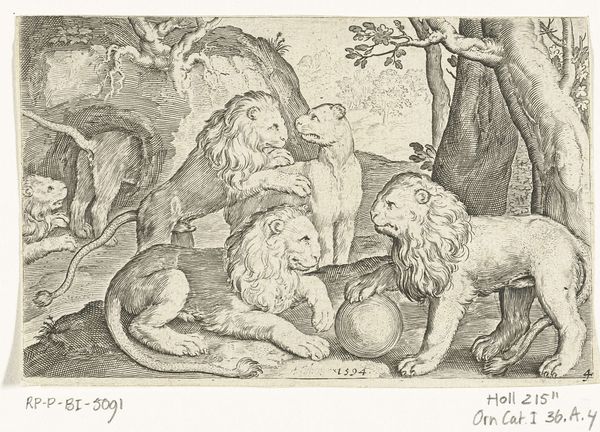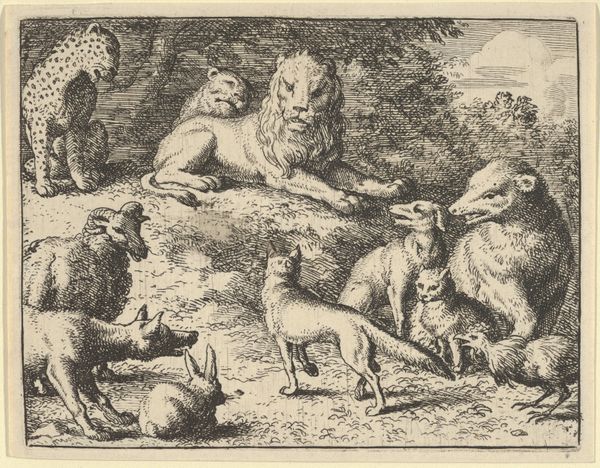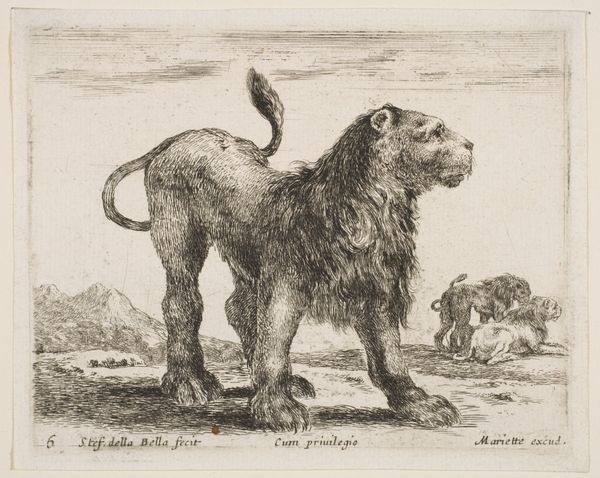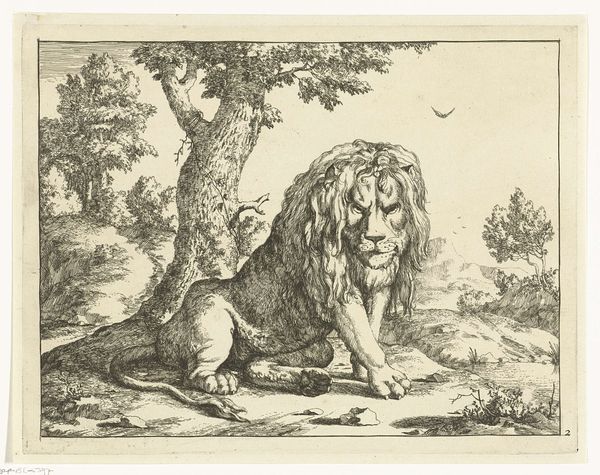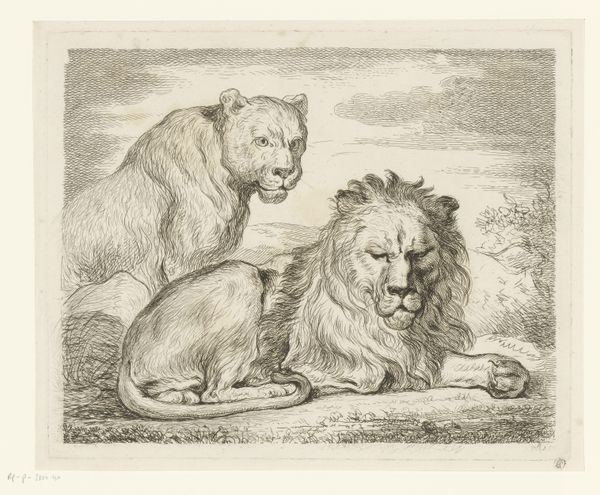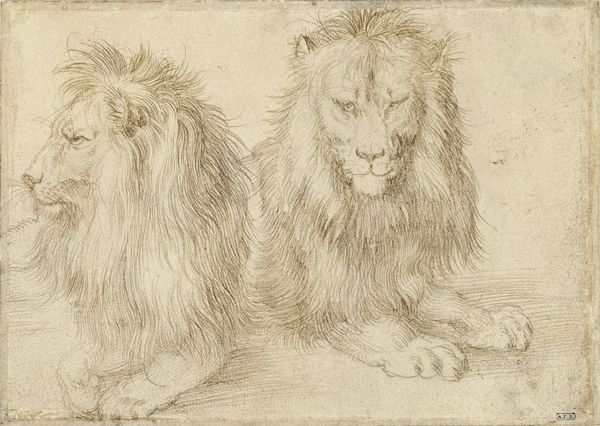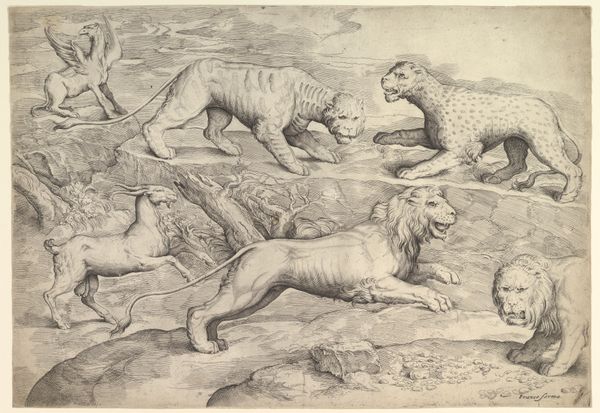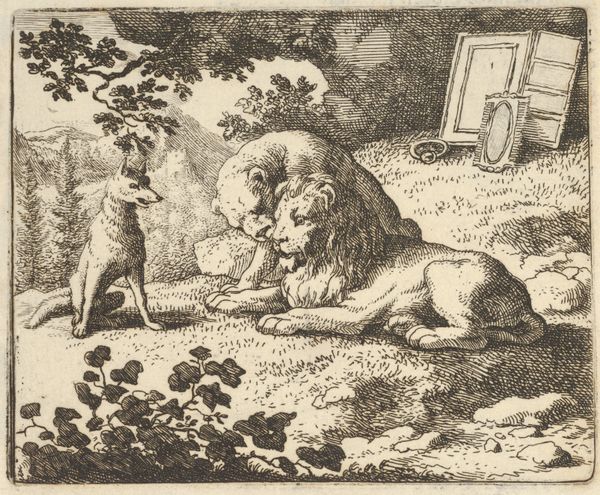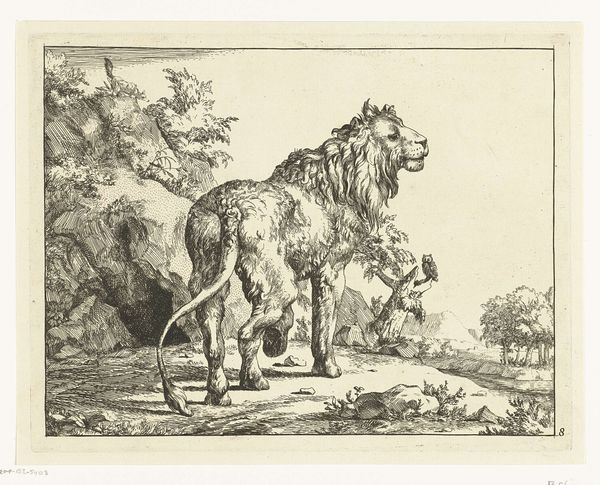
drawing, print, etching, pencil
#
pencil drawn
#
drawing
#
animal
# print
#
etching
#
pencil sketch
#
charcoal drawing
#
figuration
#
pencil drawing
#
pen-ink sketch
#
pencil
#
academic-art
#
realism
Copyright: Public domain
Cesare Biseo created this etching, "Study of Lions," in Rome, 1867. It's made through a printmaking process. The artist would have used a sharp needle to draw directly onto a copper plate, through a waxy ground. After immersing the plate in acid, the drawn lines are etched into the metal. Ink is then applied and the plate is pressed onto paper, transferring the image. The character of the etched line gives this print its vitality. Biseo really captures the texture of the lions’ manes, using dense, scribbled marks. Note how he varies the pressure and direction of the lines to suggest form and shadow. Printmaking like this played a crucial role in disseminating images and knowledge in the 19th century. It made art more accessible. At the same time, the hand-drawn aspect of etching allowed artists to retain a sense of individuality. This print beautifully illustrates the tension between mechanical reproduction and artistic expression. It shows how even in a process driven by industry, the artist's hand remains visible, adding value and meaning.
Comments
No comments
Be the first to comment and join the conversation on the ultimate creative platform.
